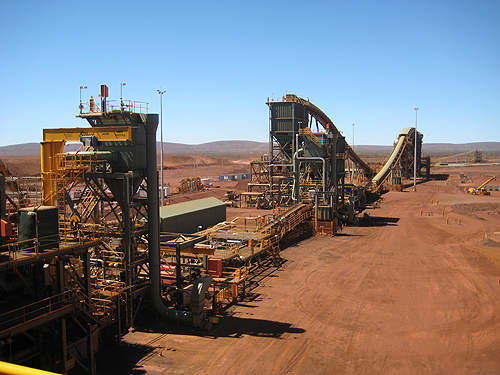Recognizing And Responding To A Flash Flood Emergency

Table of Contents
Recognizing the Signs of a Flash Flood
Understanding the precursors and visual indicators of a flash flood is the first step in protecting yourself. Knowing what to look for allows for early action and significantly increases your chances of safety.
Understanding Flash Flood Triggers
Flash floods aren't random events; they're triggered by specific circumstances. Being aware of these triggers helps you identify high-risk situations and anticipate potential flash flood warnings. Key triggers include:
- Heavy rainfall in a short period: Intense downpours, especially in areas with poor drainage, can quickly overwhelm waterways and lead to flash flooding. This is a common cause of flash floods, particularly in mountainous regions.
- Dam or levee failure: A breach in a dam or levee can release a massive volume of water in a very short time, causing devastating flash floods downstream. This requires immediate evacuation in the affected areas.
- Sudden release of water from a reservoir: Planned or unplanned releases of water from reservoirs, often due to heavy rainfall or dam maintenance, can rapidly increase water levels in downstream areas, triggering flash floods.
- Melting snow combined with heavy rain: In areas with significant snowpack, rapid melting due to warm temperatures, combined with heavy rainfall, can overwhelm drainage systems and lead to flash flooding. This is particularly dangerous in spring.
- Upstream flooding: Flooding in upstream areas can quickly propagate downstream, causing flash floods in lower-lying areas with little warning.
Identifying flash flood risks involves understanding your local geography and weather patterns. Early flash flood detection is possible by paying close attention to these triggers and official weather alerts.
Visual Cues and Warning Systems
Beyond understanding the causes, recognizing the visual warning signs of an impending flash flood is essential. These cues can provide valuable time to react:
- Rapidly rising water levels in streams, rivers, and creeks: A sudden and dramatic increase in water levels is a major warning sign. Even a seemingly small increase can quickly escalate.
- Water overflowing banks and onto normally dry areas: Water exceeding the normal boundaries of waterways indicates that the water level is rising rapidly and dangerously.
- Debris flowing in the water: Logs, branches, and other debris carried by swiftly moving water are clear indicators of a dangerous flood situation.
- A sudden increase in water flow speed: Rapidly flowing water indicates a significant increase in water volume and a heightened risk of flash flooding.
- Official warnings issued by weather services: Pay close attention to flash flood watches, warnings, and alerts issued by your local meteorological agency. These warnings indicate a high probability of flash flooding and should be taken seriously. Spotting flash flood indicators and recognizing flash flood symptoms requires vigilance and awareness of your surroundings. Heeding flash flood warnings is crucial for your safety.
Creating a Flash Flood Emergency Plan
Preparation is key to surviving a flash flood. A well-defined plan will reduce panic and increase your chances of safety.
Identifying High-Risk Areas
Understanding your local environment is crucial in developing an effective flash flood preparedness plan.
- Locate areas prone to flash flooding in your community: Identify areas with a history of flash flooding, low-lying areas near rivers or streams, and areas with poor drainage.
- Determine evacuation routes and safe zones: Plan multiple escape routes to higher ground. Identify safe locations where you can seek shelter. Knowing these routes before an emergency significantly reduces reaction time.
- Identify potential hazards like downed power lines or debris: Be aware of potential dangers in your evacuation routes to avoid further risks during a flash flood. This could also include areas with unstable ground or steep slopes. Developing a flash flood response plan requires careful consideration of these hazards.
Assembling an Emergency Kit
Having a ready-to-go emergency kit is crucial during a flash flood. This kit should contain essential supplies for survival until help arrives.
- Include essentials like water, non-perishable food, first-aid supplies, flashlights, batteries, and a radio: These items are necessary for basic survival during and after the flood.
- Consider medications, important documents, and extra clothing: Include any prescription medications, copies of important documents, and extra warm clothing, especially if the flood occurs during colder months.
- Prepare a plan for pets: Ensure your pets are accounted for and have their own supplies, such as food, water, and carriers. Preparing for a flash flood emergency should include all members of your household, including pets.
Responding to a Flash Flood Emergency
Your actions during a flash flood are critical. Swift and decisive action can save your life.
Immediate Actions
When a flash flood warning is issued or you observe signs of an impending flash flood, immediate action is vital.
- Move to higher ground immediately if you are in a flood-prone area: Do not delay. Higher ground offers the safest protection from rising floodwaters.
- Do not attempt to drive through floodwaters; even a few inches can sweep a vehicle away: Floodwaters often hide hidden dangers like debris and deep channels. Never underestimate the power of moving water.
- Avoid contact with floodwater, as it can be contaminated: Floodwater can carry disease and harmful pollutants. Avoid contact to prevent health risks.
- Stay informed about the situation via weather reports and official alerts: Continuously monitor weather updates and official warnings to stay informed about the developing situation. This is crucial for making informed decisions about your safety.
Implementing a flash flood response protocol requires understanding these immediate actions and acting decisively. Understanding safe actions during a flash flood can mean the difference between life and death.
Post-Flood Procedures
Once the immediate danger has passed, there are still important steps to take.
- Avoid damaged areas and downed power lines: These areas pose significant risks. Do not approach them until they are deemed safe by authorities.
- Report damage to authorities: Report any damage to your property or infrastructure to the relevant authorities. This helps them assess the impact of the flood and coordinate relief efforts.
- Check for injuries and seek medical attention if needed: Assess the situation for injuries and seek medical attention for anyone injured.
- Clean up carefully and discard contaminated materials properly: Clean up properly and dispose of contaminated materials following guidelines from local authorities. This prevents further health risks.
Post flash flood safety requires awareness of potential dangers and proper cleanup procedures. Learning about recovering from a flash flood can help you minimize long-term consequences.
Conclusion
Being prepared for a flash flood emergency can significantly reduce risk and save lives. By learning to recognize the signs of an impending flash flood and by developing a comprehensive response plan, you can protect yourself and your family. Remember, swift action is critical during a flash flood. Take the necessary steps today to create your flash flood emergency plan and ensure your safety. Don't wait until it's too late; learn more about flash flood preparedness and be ready for anything.

Featured Posts
-
 Worlds Largest Rubber Duck Myrtle Beach Arrival And Important Message
May 26, 2025
Worlds Largest Rubber Duck Myrtle Beach Arrival And Important Message
May 26, 2025 -
 The Pilbara Debate Rio Tintos Response To Wasteland Claims
May 26, 2025
The Pilbara Debate Rio Tintos Response To Wasteland Claims
May 26, 2025 -
 Turning Poop Papers Into Podcast Gold An Ai Approach
May 26, 2025
Turning Poop Papers Into Podcast Gold An Ai Approach
May 26, 2025 -
 Alex De Minaur Out Of Madrid Open After Straight Sets Loss To Opponents Name
May 26, 2025
Alex De Minaur Out Of Madrid Open After Straight Sets Loss To Opponents Name
May 26, 2025 -
 Beyond The Helmet The Sophisticated Style Of F1 Drivers
May 26, 2025
Beyond The Helmet The Sophisticated Style Of F1 Drivers
May 26, 2025
